
Filter News
Area of Research
- Advanced Manufacturing (4)
- Biology and Environment (78)
- Biology and Soft Matter (1)
- Computational Engineering (1)
- Computer Science (1)
- Energy Science (56)
- Fusion and Fission (17)
- Fusion Energy (11)
- Isotopes (19)
- Materials (30)
- Mathematics (1)
- National Security (14)
- Neutron Science (5)
- Nuclear Science and Technology (10)
- Quantum information Science (1)
- Supercomputing (22)
News Type
News Topics
- (-) Clean Water (31)
- (-) Composites (22)
- (-) Cybersecurity (17)
- (-) Environment (172)
- (-) Fusion (49)
- (-) Isotopes (40)
- (-) Partnerships (37)
- 3-D Printing/Advanced Manufacturing (93)
- Advanced Reactors (26)
- Artificial Intelligence (94)
- Big Data (67)
- Bioenergy (86)
- Biology (102)
- Biomedical (55)
- Biotechnology (29)
- Buildings (55)
- Chemical Sciences (50)
- Computer Science (159)
- Coronavirus (31)
- Critical Materials (18)
- Education (2)
- Emergency (4)
- Energy Storage (69)
- Exascale Computing (52)
- Fossil Energy (7)
- Frontier (46)
- Grid (56)
- High-Performance Computing (94)
- Hydropower (12)
- Irradiation (2)
- ITER (7)
- Machine Learning (54)
- Materials (89)
- Materials Science (98)
- Mathematics (12)
- Mercury (10)
- Microelectronics (3)
- Microscopy (38)
- Molten Salt (7)
- Nanotechnology (33)
- National Security (66)
- Neutron Science (112)
- Nuclear Energy (90)
- Physics (43)
- Polymers (21)
- Quantum Computing (39)
- Quantum Science (59)
- Security (19)
- Simulation (53)
- Software (1)
- Space Exploration (23)
- Statistics (3)
- Summit (48)
- Transportation (71)
Media Contacts
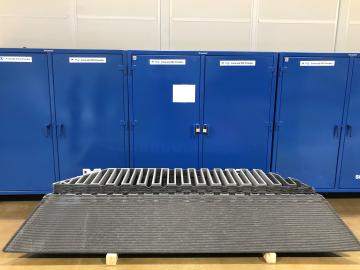
Oak Ridge National Laboratory researchers, in collaboration with Cincinnati Inc., demonstrated the potential for using multimaterials and recycled composites in large-scale applications by 3D printing a mold that replicated a single facet of a
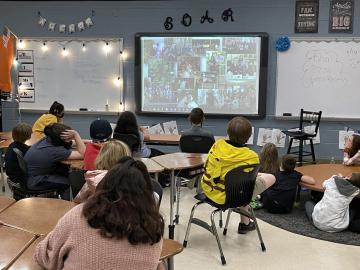
Esther Parish is one of eight scientists from the Department of Energy's Oak Ridge National Laboratory talking to students in nine schools across East Tennessee as part of National Environmental Education Week, or EE Week.

Rich Giannone uses bioanalytical mass spectrometry to examine proteins, the primary driver in biological systems.

Oak Ridge National Laboratory was among an international team, led by Lawrence Livermore National Laboratory, who synthesized 108 elevated carbon dioxide, or CO2, experiments performed in various ecosystems to find out how much carbon is
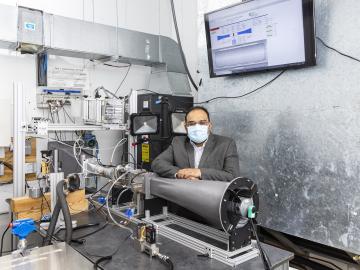
When Kashif Nawaz looks at a satellite map of the U.S., he sees millions of buildings that could hold a potential solution for the capture of carbon dioxide, a plentiful gas that can be harmful when excessive amounts are released into the atmosphere, raising the Earth’s temperature.

New data distributed through NASA’s Oak Ridge National Laboratory Distributed Active Archive Center, or ORNL DAAC, provide an unprecedented picture of plants’ carbon storage capacity around the globe.

Researchers at Oak Ridge National Laboratory have identified a statistical relationship between the growth of cities and the spread of paved surfaces like roads and sidewalks. These impervious surfaces impede the flow of water into the ground, affecting the water cycle and, by extension, the climate.

Oak Ridge National Laboratory researchers combined additive manufacturing with conventional compression molding to produce high-performance thermoplastic composites reinforced with short carbon fibers.
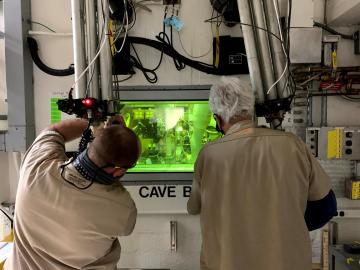
A new method developed at Oak Ridge National Laboratory proves one effort’s trash is another’s valuable isotope. One of the byproducts of the lab’s national plutonium-238 production program is promethium-147, a rare isotope used in nuclear batteries and to measure the thickness of materials.
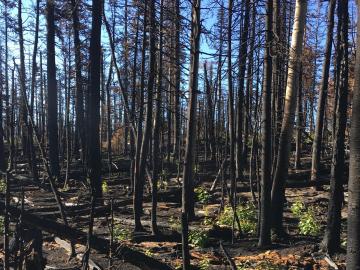
An Oak Ridge National Laboratory research team discovered that aspen saplings emerging after wildfire have less diverse microbiomes and more pathogens in their leaves, providing new insights about how fire affects ecosystem recovery.


